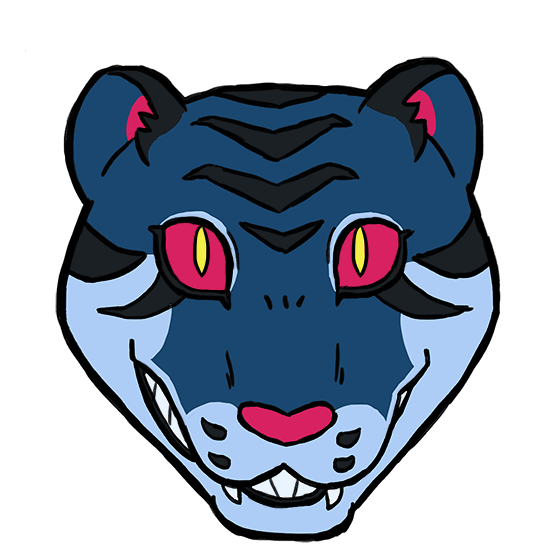Xeylon (Sei lonn)
Public sentientologic record
Property of the Royal Atheneum of Hövnís, Eörpe
Etymology and Definition
The species' name was originally meant as a temporary label until a native naming for their own species/people was provided. It was derived from a combination between the name of their homeworld (Xuelsa) and a bioengineered species named 'greylon' that used xeylon DNA as part of its makeup. The xeylons still haven't provided an official naming for their species, and even going as far to express not caring at all about what aliens calls them. Still, there's an ongoing evaluation on having the species renamed to 'xuelsan'.Habitat & Population
The xeylons are of relatively low population, but have spread from their original habitat to form settlements in all regions of their homeworld except the arctic zones of the north and south poles.Biology
Morphology
The xeylons are short and squat ectothermic hominins developed to stand upright and walk on two legs. They average on 140-165cm in height and 40-60kg in weight, with males being taller and heavier than females. In addition, females tend to have a wider pelvic girlde and more rounded body shape and facial features. Their bodies are stocky, featuring a head, neck, a torso, two arms with a five digit hand each, two legs with a five-digit foot each, and a short, thick tail. They have a distinct bulge starting at the back of their heads and running along their backs and out to the full width of the tail, which act as an extra reservoir for storing fat and water. They have a broad jawline making their faces look almost square, with sunken cheeks, a broad mouth, and a flat, broad nose with a crease running down its center. The eyes are comparatively large and dominated by the irises, with pupils that contract down to thin slits or dilate to an almond shape depending on the available light. Xeylon's skin is rough and leather-like, entirely lacking natural hair growth. They have no external ears.Anatomy & Physiology
Cardiovascular System
The xeylons have a hemolymphatic circulatory system, with an enlarged liver serving as the primary production of hemolymph and a total of three one-chambered hearts responsible for transporting it around the body. Two small brachial hearts are located in proximity to their lungs and their main function is to transport deoxygenate blood through the lung's vessels to be oxygenated again. A systemic, larger heart located a little above the solar plexus, is responsible for transporting the oxygenated blood out of the lungs and through the rest of the body.Skin, Tissue & Blood
Xeylons have a superficial, extra layer of skin containing pigments, with another layer of cells with guanine crystals below. Through cell signals affected by mood, stress or conscious thought, they can adjust the space between the crystals in order to change the wavelength of light reflected off them which will cause their skin to change coloration, shift patterns, and even appear to change in texture.Voice
While xeylons have the capacity for speech, and feature vocal cords like many other sapient species, they don't naturally use sound as a means of communication other than to call for others to pay attention to them so they can communicate properly through chromawave. A low, short noise tends to suffice. For this reason, on the rare occasion a xeylon would learn a spoken alien language, they tend to have very low-key, soft and calm voices. Most have a great difficulty with producing sounds that are high-pitched or loud. Only extensive training would let them develop a voice range similar to an eörpan.Sensory Capabilities
Sight
The large eyes of the xeylons give them a sense of sight far sharper than that of humans, and they both can discern details at much further distances and resolve rapid and slow movement far better. With exception of blue-eyed individuals, xeylons have excellent eyesight even in poor lighting conditions. Similar to many felines they have a reflective layer behind the retina, called a tapetum lucidum, that sends light that passes through it back into the eye. This allows them to see well with less than one-sixth the amount of light humans need, and a minimum light detection threshold of around seven times lower. The heavy contraction of their pupil reduces the amount of light the eyes take in when exposed to very bright light, which both protects their sensitive retina and improves their depth of field.Other Senses
As the xeylons have mainly depended on their sight, their other senses have suffered in comparison. Their sense of smell is about the same as a eörpans, but their taste and hearing is much worse. In particular they have no receptors for sweet or sour tastes. When it comes to hearing, the xeylons have a difficult time picking out and identifying individual sounds in a noisy environment. Sounds in higher pitches tend to be especially grating and can be headache-inducing.Dietary Needs & Habits
Xeylons are omnivorous, but require the larger portion of their diet to be protein in order to stay healthy and its the sole source of nutrients the xulosam (see symbiotic organism section below) can live off of.Parasitic & Symbiotic Organisms
The xeylons are reliant on an exothermic bacteria called xulamos to maintain their body temperature. The bacteria lives in their stomach and small intestine. As they metabolize part of the nutrients they absorb from the xeylon's intake of food and drink they produce excess heat, which then helps to warm up the xeylon's blood in nearby vessels and is transported to other parts of the body. The xulamos have a very short lifespan and propagate slowly, which requires the xeylons to regularly include the bacteria in their diet. Its part of proper health education to teach children how to manually balance their xulamos levels to ensure they stay healthy and avoid freezing or overheating. The most common intake of the bacteria is through various supplements or health drinks, with careful instructions of how to calculate the needed amount of bacteria intake by taking into account factors such as lifestyle, activity level and outdoor weather conditions. Xulamos are commercially grown by pharmaceutical companies, usually in large vats of nutrient solvent.Genetics
Life Cycle
The xeylons have a normal lifespan of circa 80 years. They typically reach sexual maturity around the age of 20, but in most cultures aren't considered legal adults until past 22-24 years of age.Reproduction
Xeylons reproduce through internal fertilization via sexual intercourse. Normal pregnancy lasts for ten months and the child is then considered the responsibility of their parents until the age of 22-24 (exact age may vary slightly depending on culture).Taxological Data
Sapient
Many Xeylons
Biological Data
The Rosepetal Galaxy



This is such a fascinating article, I really love when alien species have distinct differences from humans and when it's all scientific. I love their relationship with the bacteria. :D
Theorizing about possible alien life while reading random biology stuff is a favorite pasttime of mine. :) And we have so many weird and wonderful species already here on Earth to draw inspiration from!